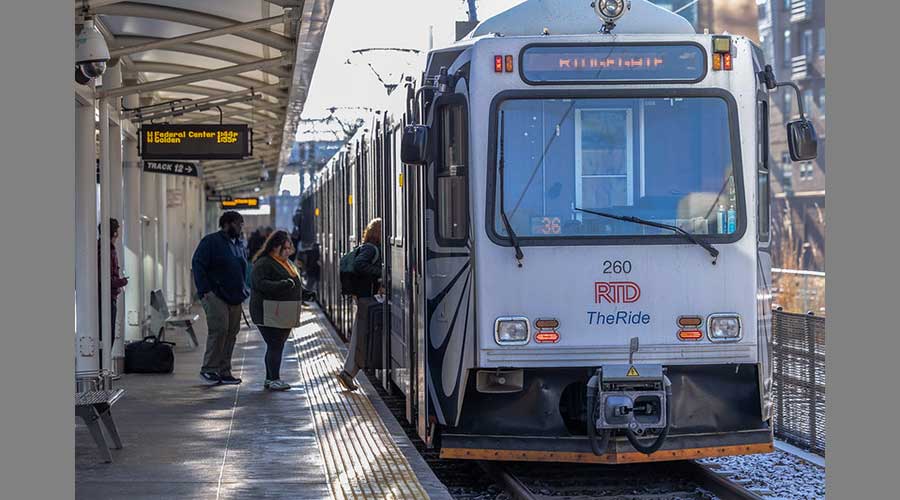Newsletter Sign Up
Stay updated on news, articles and information for the rail industry
Stay updated on news, articles and information for the rail industry
RAIL EMPLOYMENT & NOTICES
Rail News Home
Financials
Rail News: Financials

7/29/2011
Rail News: Financials
MTA releases preliminary 2012 budget, long-term capital plan

advertisement
On Wednesday, the New York Metropolitan Transportation Authority (MTA) released a preliminary budget for 2012 and financial plan for 2012-2015 that would build on previous cost-cutting efforts, yield $3.8 billion in cumulative savings by 2014 and achieve a balanced budget without service cuts or fare increases in 2012, MTA officials said in a prepared statement.
“By keeping our focus on making every dollar count, this financial plan brings stability back to the MTA’s finances,” said MTA Chairman and Chief Executive Officer Jay Walder, who recently announced plans to leave his post in October. “As a result, we’re able to meet our commitments to avoid service cuts and fare increases next year. The savings also pave the way for a new funding strategy that will advance vital capital investments that protect the safety and reliability of our transportation network.”
The 2012-2015 financial plan proposes more cost cuts; no wage increase for three years; continued implementation of biennial 7.5 percent fare and toll increases in 2013 and 2015; and continued receipt of dedicated taxes and subsidies.
The cost-trimming efforts would include $525 million in recurring savings achieved in 2010, with savings targets increasing each year of the plan and reaching $799 million by 2015. Savings of $623 million in 2011 will be achieved by rebidding health care contracts, consolidating IT functions, overhauling procurement practices, and improving inventory management, according to MTA.
However, one of the biggest risks facing the authority is its “underfunded” capital program, MTA officials said.
“While the state’s bailout of the MTA in 2009 provided funding for the first two years of the 2010-2014 capital program, the final three years remain unfunded,” they said.
As a result, the agency aims to make more “tough choices” to stretch available dollars, officials said.
For example, in 2010, the MTA cut $2 billion from the program by reducing rolling stock costs, shifting to a component-based station rehabilitation program and sharing shop space across agencies. Last week, the authority announced plans to double that savings to $4 billion, reducing the overall cost of the program to $24.2 billion. Those savings would be achieved by reducing capital administrative staff by 15 percent, lowering the cost of train and bus purchases, partnering with contractors and labor to reduce bid costs, and selling underutilized assets such at the Madison Avenue headquarters.
“By keeping our focus on making every dollar count, this financial plan brings stability back to the MTA’s finances,” said MTA Chairman and Chief Executive Officer Jay Walder, who recently announced plans to leave his post in October. “As a result, we’re able to meet our commitments to avoid service cuts and fare increases next year. The savings also pave the way for a new funding strategy that will advance vital capital investments that protect the safety and reliability of our transportation network.”
The 2012-2015 financial plan proposes more cost cuts; no wage increase for three years; continued implementation of biennial 7.5 percent fare and toll increases in 2013 and 2015; and continued receipt of dedicated taxes and subsidies.
The cost-trimming efforts would include $525 million in recurring savings achieved in 2010, with savings targets increasing each year of the plan and reaching $799 million by 2015. Savings of $623 million in 2011 will be achieved by rebidding health care contracts, consolidating IT functions, overhauling procurement practices, and improving inventory management, according to MTA.
However, one of the biggest risks facing the authority is its “underfunded” capital program, MTA officials said.
“While the state’s bailout of the MTA in 2009 provided funding for the first two years of the 2010-2014 capital program, the final three years remain unfunded,” they said.
As a result, the agency aims to make more “tough choices” to stretch available dollars, officials said.
For example, in 2010, the MTA cut $2 billion from the program by reducing rolling stock costs, shifting to a component-based station rehabilitation program and sharing shop space across agencies. Last week, the authority announced plans to double that savings to $4 billion, reducing the overall cost of the program to $24.2 billion. Those savings would be achieved by reducing capital administrative staff by 15 percent, lowering the cost of train and bus purchases, partnering with contractors and labor to reduce bid costs, and selling underutilized assets such at the Madison Avenue headquarters.


 2025 MOW Spending Report: Passenger-rail programs
2025 MOW Spending Report: Passenger-rail programs
 Gardner steps down as Amtrak CEO
Gardner steps down as Amtrak CEO
 Guest comment: Oliver Wyman’s David Hunt
Guest comment: Oliver Wyman’s David Hunt
 Women of Influence in Rail eBook
Women of Influence in Rail eBook
 railPrime
railPrime








